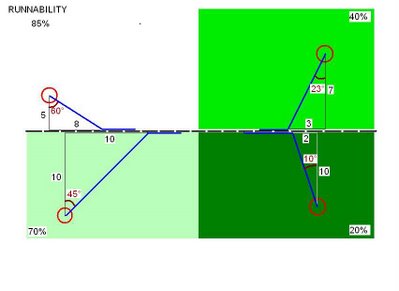Orient'Show video

As you might have read, last weekend was the first Orient'Show in France. De Laatste Post was there, wearing both a Press and participant hat.
Overall, Orient'Show was a fantastic experience. The organizers did a major effort to make the event as media and spectator friendly as possible. It was a shame that only a few participants showed up.
But when these few include names like Thierry Gueorgiou, Damien Renard,
JB Bourrin and Fabien Pasquasy, you know the competitions will be tough.
The first event of the weekend was a middle distance. It was easily won by Fabien Pasquasy. The map wasn't that special, except for the far more contour lines than expected in this part of France, but the course had a few route choices in the final part. Something more interesting was the presence of a group of a school. Both the kids and teachers were quite interested in Orienteering. They had promo folders of the French Team and papers to get autographs of the "stars". Even we considered for a moment to go to Thierry and ask
his autograph, but when
thinking of our goal for the weekend (ie. be faster than Him at least once), we thought it wouldn't be that appropriate. Anyway, this shows
that the French
are doing some efforts in promoting orienteering and that it actually works.
The Orient'Show itself was the next event. It took place at a terrain close to Decathlon, a large sports store. It was a perfect spot for such a competition. Spectators were a few meters higher than most of the terrain, so they had an excellent view on whatever was going on down there. Problem was that there were hardly any (if at all) spectators from outside the orienteering world.
Most things about the Orient'Show are
already told. The most notable thing we can contribute is that we have a little video from the "great final" between Thierry Gueorgiou
and Amélie Chataing. Quality is rather low, but it still gives you an impression
of the speeds and map reading skills as well as the terrain.
Our own results were quite good. Out of 6, 4 made it to the 1/2 final and Thomas missed the final because of the slowness of his SI. Since we're used to Emit, where it's ok to be just close enough to the control, waiting for the beep is frustrating.
The last competition was the long distance in and out an old fort in Lille. This time, the map wasn't quite suited for a long distance, but you had to keep
your eyes open, since
you have that sprint feeling for more than an hour. Fabien's giant steps made the
difference and he won quite easily.













